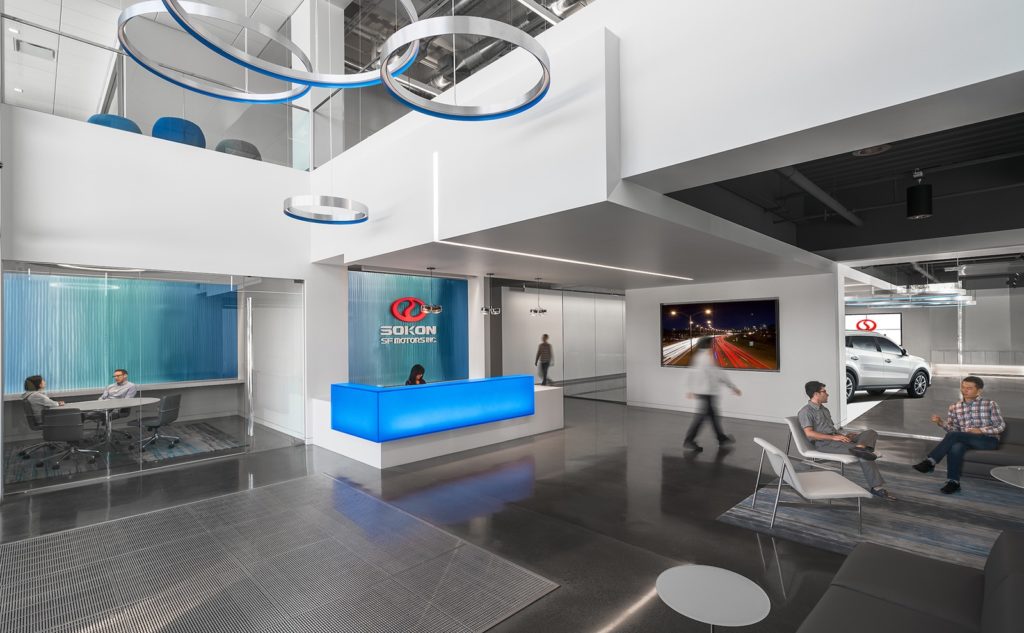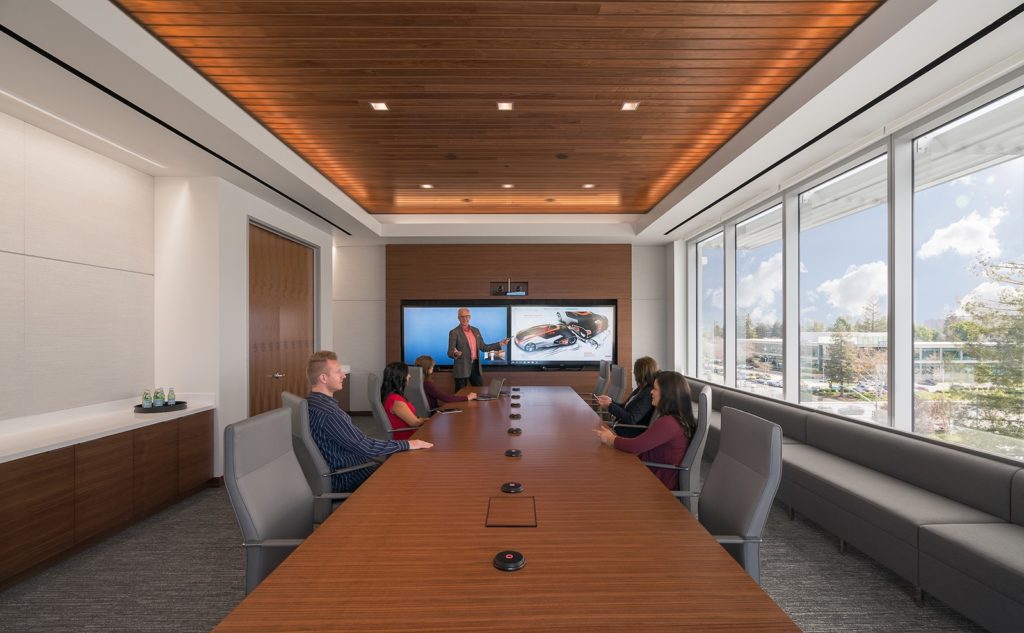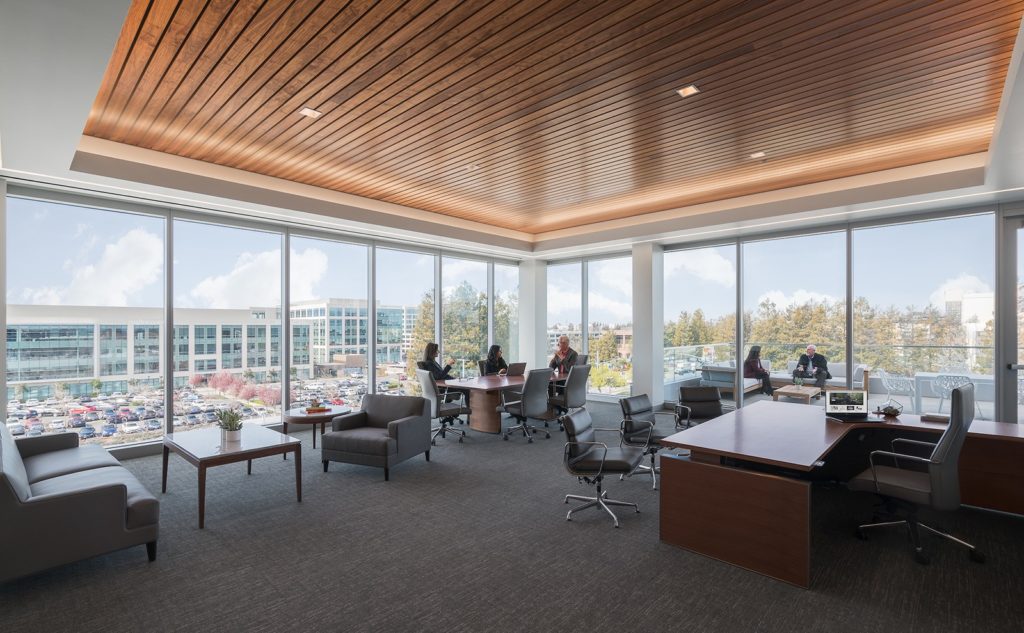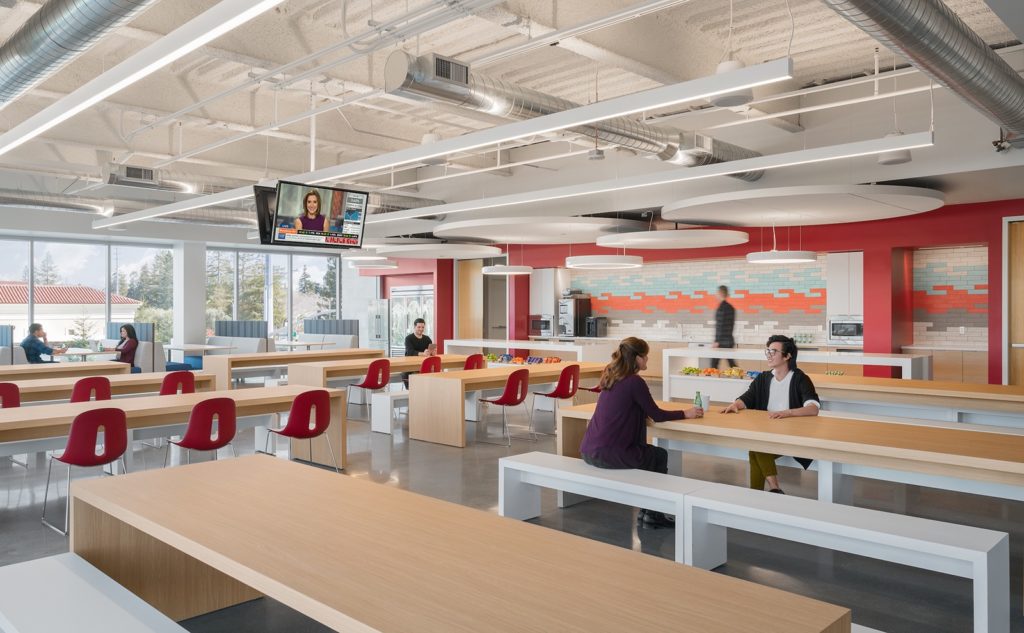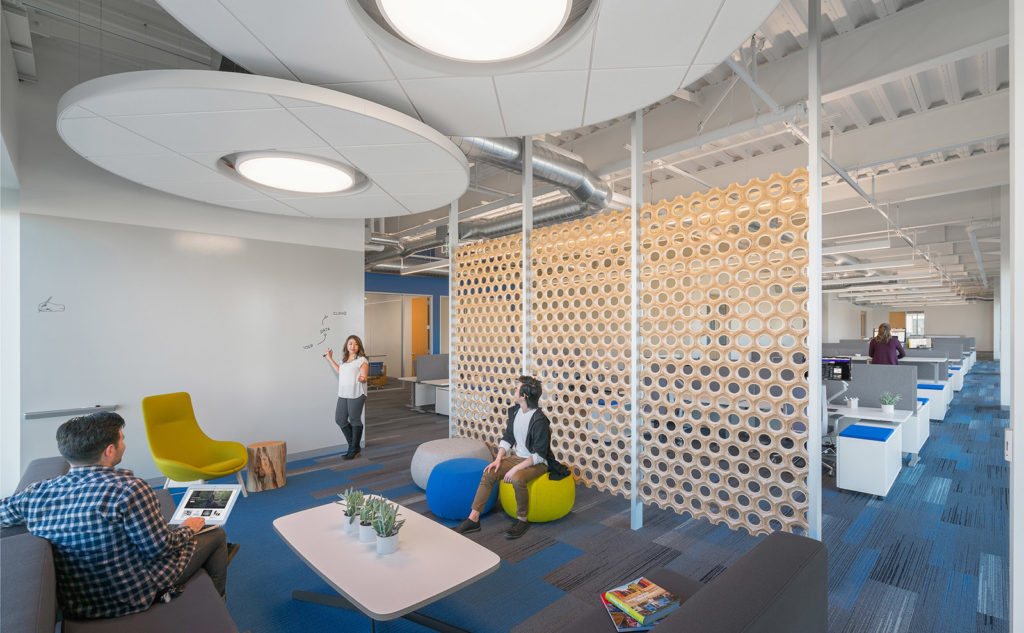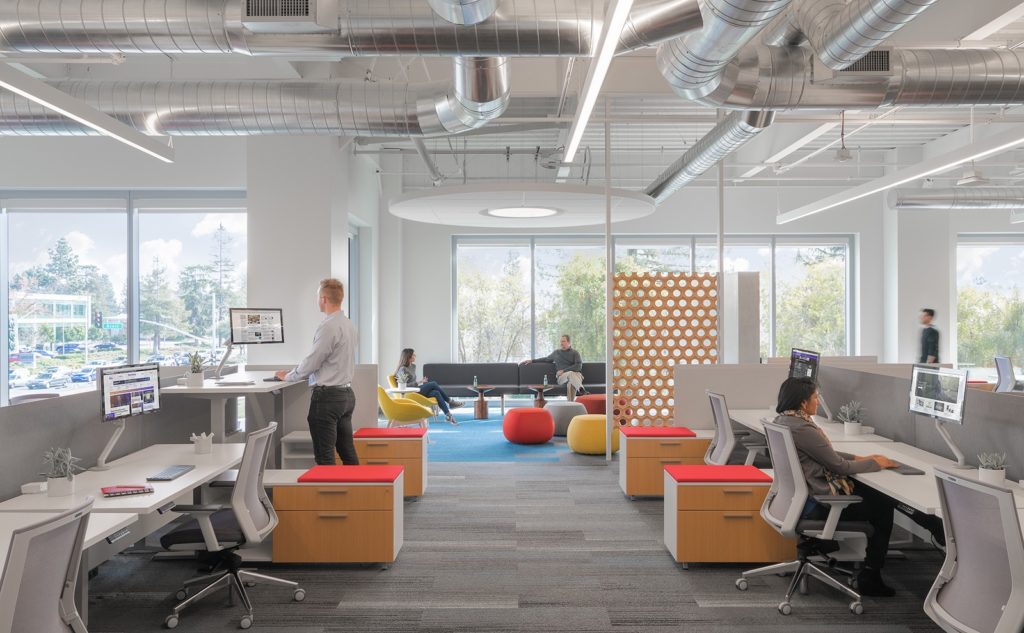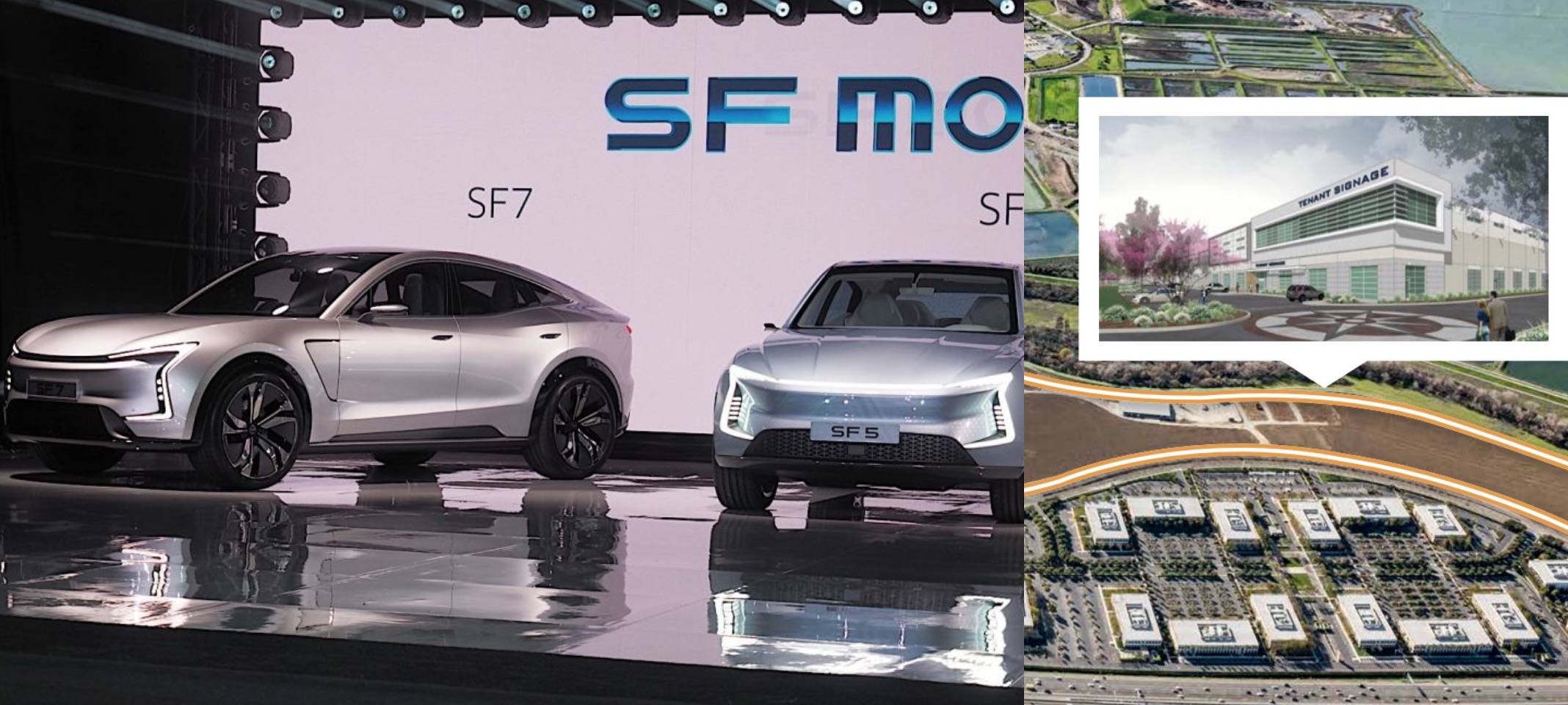
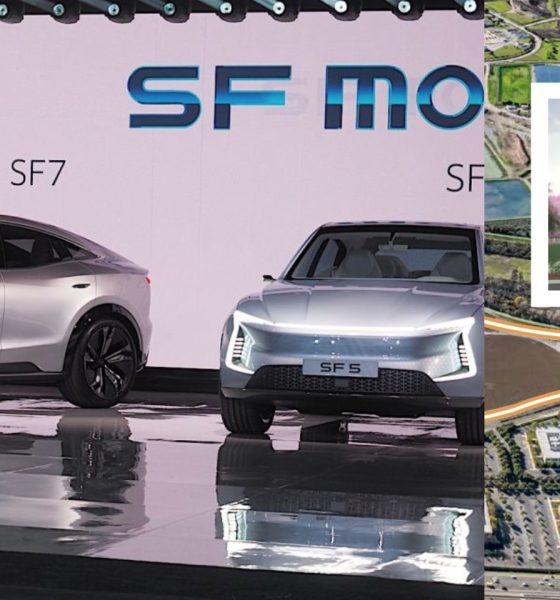
News
SF Motors set sights on EV mass production with latest R&D testing facility
Santa Clara based electric vehicle startup SF Motors is opening up a new full-scale R&D center in Silicon Valley. SF Motors was founded in January 2016 after a large investment from Sokon Motors, a large Chinese automotive company. The company’s new 130,000 sqft research and development facility will be located in Milpitas, CA, roughly 6 miles away from SF’s headquarters.
The new facility, which is expected to be completed in Q4 ’18, will be capable of “small batch” manufacturing and development of manufacturing processes. The company is focusing on battery, powertrain, and autonomous vehicle development at the facility.
“Adding to our existing R&D labs, this new facility will conduct extensive design validation testing and small-scale manufacturing necessary to ensure a smooth transition to mass production of our batteries and electric powertrains, which are key components of our vehicles,” said SF Motors CTO Yifan Tang.
Yifan Tang joined SF Motors in February 2017. He was previously the technical lead on Facebook’s high-altitude long-range aircraft aimed at beaming internet across the globe. Before Facebook, Tang was VP of Drivetrain Engineering at Lucid Motors for three years and Principal Motor Technologist at Tesla for five years. During his time at Tesla Tang designed the motors for the Roadster, Model S, Mercedes B-Class/Toyota Rav4, and the prototype Model X AWD. Tang has a Ph.D. in electrical engineering from The Ohio State University and 35 U.S. patents.
- SF Motors’ Santa Clara Headquarters (Photos: Greg Cortez)
- SF Motors’ Santa Clara Headquarters (Photos: Greg Cortez)
- SF Motors’ Santa Clara Headquarters (Photos: Greg Cortez)
- SF Motors’ Santa Clara Headquarters (Photos: Greg Cortez)
- SF Motors’ Santa Clara Headquarters (Photos: Greg Cortez)
In October 2017 SF Motors acquired Tesla co-founder Martin Eberhard’s battery module startup evINIT for $33M. Eberhard is now Chief Strategy Officer at SF Motors and the former CEO of evINIT, Mike Miskovsky, is Chief Development Officer. Eberhard served as the CEO of Tesla in its early years until late 2007.
Closing the loop from R&D to Manufacturing
SF Motors’ CTO Yifan Tang tells Teslarati that the new facility will help “close the loop from R&D to manufacturing,” and help accelerate the company to mass production. Tang describes the new facility as a key part of SF Motors strategy as they push forward to mass production.
According to SF Motors, the company is already prepping manufacturing facilities in the U.S. and China. SF Motors purchased a 675,000 sqft plant in Indiana from AM General in November 2017. The company also has a massive factory in Chongqing, China, with nearly 8.4M sqft of manufacturing space that’s capable of producing 200,000 vehicles per year.

SF Motors’ new R&D Facility in Milpitas, California (Photo: Loopnet/McCarthy Creekside
Industrial Center)
SF’s Tang emphasized that the company’s abilities to produce small-batch trial production at their R&D facility will differentiate itself from other automotive manufacturers. The company plans to also produce battery cells at the facility and will test different cell configurations, modules, and battery pack sizes.
SF plans to produce a wide range of vehicles, and the ability to tweak cell chemistry along with module configurations will allow them to produce battery packs that are optimized for cost efficiency and performance.
The new R&D facility will house roughly 100 employees, but its proximity to the company’s headquarters allows the company to shift employees back and forth. “Drawing on our global business model and decades of manufacturing experience, locating this facility near our Silicon Valley headquarters will strategically ensure quality and efficiency as we prepare to bring our intelligent EVs to market,” Tang said in a press release.
SF Motors plans to start trial production of their vehicles at the end of this year.
Update at 10:35 am PT: An earlier version of this article incorrectly stated that SF Motors was a subsidiary of Sokon Motors. Sokon Motors was a large initial investor in SF Motors, but does not wholely own the company.

News
Tesla aims to combat common Full Self-Driving problem with new patent
Tesla writes in the patent that its autonomous and semi-autonomous vehicles are heavily reliant on camera systems to navigate and interact with their environment.

Tesla is aiming to combat a common Full Self-Driving problem with a new patent.
One issue with Tesla’s vision-based approach is that sunlight glare can become a troublesome element of everyday travel. Full Self-Driving is certainly an amazing technology, but there are still things Tesla is aiming to figure out with its development.
Unfortunately, it is extremely difficult to get around this issue, and even humans need ways to combat it when they’re driving, as we commonly use sunglasses or sun visors to give us better visibility.
Cameras obviously do not have these ways to fight sunglare, but a new patent Tesla recently had published aims to fight this through a “glare shield.”
Tesla writes in the patent that its autonomous and semi-autonomous vehicles are heavily reliant on camera systems to navigate and interact with their environment.

The ability to see surroundings is crucial for accurate performance, and glare is one element of interference that has yet to be confronted.
Tesla described the patent, which will utilize “a textured surface composed of an array of micro-cones, or cone-shaped formations, which serve to scatter incident light in various directions, thereby reducing glare and improving camera vision.”

The patent was first spotted by Not a Tesla App.
The design of the micro-cones is the first element of the puzzle to fight the excess glare. The patent says they are “optimized in size, angle, and orientation to minimize Total Hemispherical Reflectance (THR) and reflection penalty, enhancing the camera’s ability to accurately interpret visual data.”
Additionally, there is an electromechanical system for dynamic orientation adjustment, which will allow the micro-cones to move based on the angle of external light sources.
This is not the only thing Tesla is mulling to resolve issues with sunlight glare, as it has also worked on two other ways to combat the problem. One thing the company has discussed is a direct photon count.
CEO Elon Musk said during the Q2 Earnings Call:
“We use an approach which is direct photon count. When you see a processed image, so the image that goes from the sort of photon counter — the silicon photon counter — that then goes through a digital signal processor or image signal processor, that’s normally what happens. And then the image that you see looks all washed out, because if you point the camera at the sun, the post-processing of the photon counting washes things out.”
Future Hardware iterations, like Hardware 5 and Hardware 6, could also integrate better solutions for the sunglare issue, such as neutral density filters or heated lenses, aiming to solve glare more effectively.
Elon Musk
Delaware Supreme Court reinstates Elon Musk’s 2018 Tesla CEO pay package
The unanimous decision criticized the prior total rescission as “improper and inequitable,” arguing that it left Musk uncompensated for six years of transformative leadership at Tesla.

The Delaware Supreme Court has overturned a lower court ruling, reinstating Elon Musk’s 2018 compensation package originally valued at $56 billion but now worth approximately $139 billion due to Tesla’s soaring stock price.
The unanimous decision criticized the prior total rescission as “improper and inequitable,” arguing that it left Musk uncompensated for six years of transformative leadership at Tesla. Musk quickly celebrated the outcome on X, stating that he felt “vindicated.” He also shared his gratitude to TSLA shareholders.
Delaware Supreme Court makes a decision
In a 49-page ruling Friday, the Delaware Supreme Court reversed Chancellor Kathaleen McCormick’s 2024 decision that voided the 2018 package over alleged board conflicts and inadequate shareholder disclosures. The high court acknowledged varying views on liability but agreed rescission was excessive, stating it “leaves Musk uncompensated for his time and efforts over a period of six years.”
The 2018 plan granted Musk options on about 304 million shares upon hitting aggressive milestones, all of which were achieved ahead of time. Shareholders overwhelmingly approved it initially in 2018 and ratified it once again in 2024 after the Delaware lower court struck it down. The case against Musk’s 2018 pay package was filed by plaintiff Richard Tornetta, who held just nine shares when the compensation plan was approved.
A hard-fought victory
As noted in a Reuters report, Tesla’s win avoids a potential $26 billion earnings hit from replacing the award at current prices. Tesla, now Texas-incorporated, had hedged with interim plans, including a November 2025 shareholder-approved package potentially worth $878 billion tied to Robotaxi and Optimus goals and other extremely aggressive operational milestones.
The saga surrounding Elon Musk’s 2018 pay package ultimately damaged Delaware’s corporate appeal, prompting a number of high-profile firms, such as Dropbox, Roblox, Trade Desk, and Coinbase, to follow Tesla’s exodus out of the state. What added more fuel to the issue was the fact that Tornetta’s legal team, following the lower court’s 2024 decision, demanded a fee request of more than $5.1 billion worth of TSLA stock, which was equal to an hourly rate of over $200,000.
Delaware Supreme Court Elon Musk 2018 Pay Package by Simon Alvarez
News
Tesla Cybercab tests are going on overdrive with production-ready units
Tesla is ramping its real-world tests of the Cybercab, with multiple sightings of the vehicle being reported across social media this week.

Tesla is ramping its real-world tests of the Cybercab, with multiple sightings of the autonomous two-seater being reported across social media this week. Based on videos of the vehicle that have been shared online, it appears that Cybercab tests are underway across multiple states.
Recent Cybercab sightings
Reports of Cybercab tests have ramped this week, with a vehicle that looked like a production-ready prototype being spotted at Apple’s Visitor Center in California. The vehicle in this sighting was interesting as it was equipped with a steering wheel. The vehicle also featured some changes to the design of its brake lights.
The Cybercab was also filmed testing at the Fremont factory’s test track, which also seemed to involve a vehicle that looked production-ready. This also seemed to be the case for a Cybercab that was spotted in Austin, Texas, which happened to be undergoing real-world tests. Overall, these sightings suggest that Cybercab testing is fully underway, and the vehicle is really moving towards production.
Production design all but finalized?
Recently, a near-production-ready Cybercab was showcased at Tesla’s Santana Row showroom in San Jose. The vehicle was equipped with frameless windows, dual windshield wipers, powered butterfly door struts, an extended front splitter, an updated lightbar, new wheel covers, and a license plate bracket. Interior updates include redesigned dash/door panels, refined seats with center cupholders, updated carpet, and what appeared to be improved legroom.
There seems to be a pretty good chance that the Cybercab’s design has been all but finalized, at least considering Elon Musk’s comments at the 2025 Annual Shareholder Meeting. During the event, Musk confirmed that the vehicle will enter production around April 2026, and its production targets will be quite ambitious.
